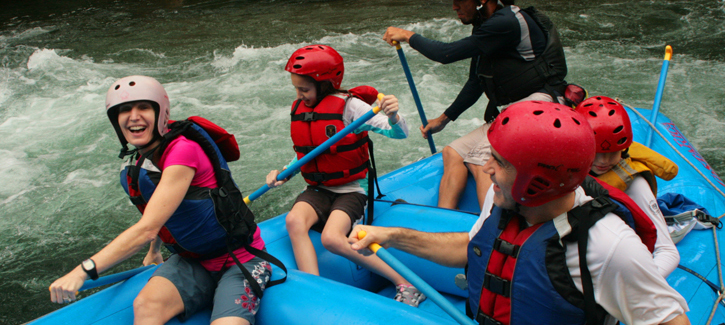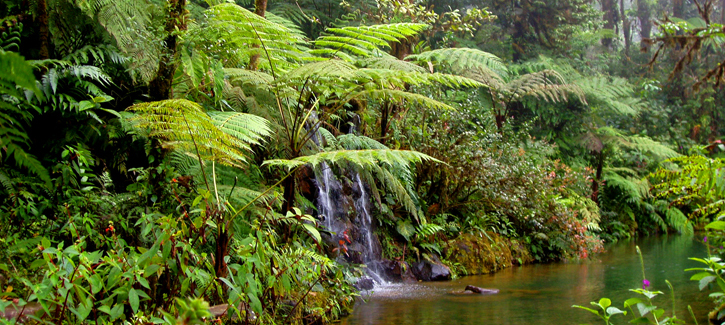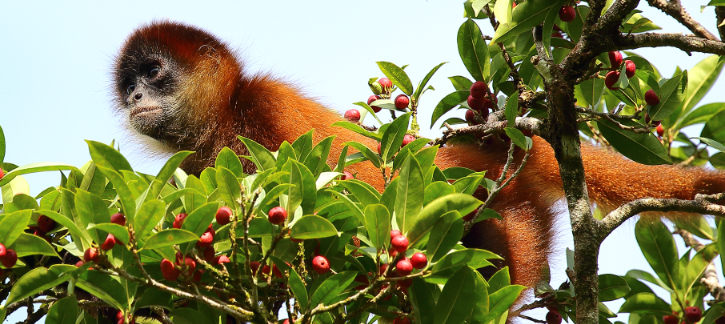





Costa Rica is 51,100 square kilometers (19,714 square miles). This makes it just a bit smaller than West Virginia, or, for a trickier to grasp comparison: 58% of the greater metropolitan area of Los Angeles.
The population in the 2022 census was roughly 5,044,000. Costa Rica may be small, but it is the land bridge between North and South America. It sits between the Caribbean and the Pacific, and mountain ranges through the center decide which ocean the rains will wash out to.
While a tiny country geographically, ecologically Costa Rica is almost too good to believe. It has more species of mammals and birds than the continental United States and Canada combined, and unmatched flora that includes over 1,400 species of wild orchids alone. For the adventurer Costa Rica boasts world class rapids, unparalleled sport fishing on two coasts, surfing on legendary beach, point and river breaks, and perhaps most importantly, a world famous national park system waiting to be shown to you by boat, kayak, foot and horseback.
Temperatures in Costa Rica vary from below freezing at night at high altitudes to the high 80´s at sea level. In the cloud and rain forests, humidity often hovers around the 100% mark. The Central Valley (altitude 3,000 to 5,000 feet), which includes San Jose, is noted for its eternal spring-like weather with average temperatures in the high 60´s F.
25% of Costa Rica´s land has been designated as protected. These parks range from coastal rainforest in Tortuguero, to cloud forest in Monteverde, to mangrove on the Osa Peninsula and dry tropical forest in Guanacaste. All are unique environments, immensely high in biodiversity and fundamental to the health and beauty of the planet, and all have unique stories of development as protected areas, often in the face of commercial interests.
The story of how a country went from facing overwhelming deforestation to protecting a full quarter of their national land is one involving all the good elements of a Costa Rican yarn; strong national and foreign personalities, political stalemates and triumphs, plenty of heated discussion, a “fly by the seat of your pants” style of development and management and most of all a fierce patriotic love of the country’s natural beauty, coupled with the determination to protect it.
Costa Rica, a renowned global leader in sustainability, was honored with the prestigious title of "Champion of the Earth" by the United Nations in 2019. This distinguished accolade was bestowed upon the country in recognition of its exceptional policy leadership, marked by a pioneering commitment to the preservation of nature and a resolute dedication to implementing ambitious measures to combat climate change.
It is an inspiring story of conservation, and please let us know if it is something that interests you when considering a vacation, as we would love to introduce you to friends of ours ranging from one of the park service’s founders to some of its oldest and most knowledgeable guides.
Costa Rica has had a stable democracy under a constitution since 1949. It is the longest running, and most stable, democracy in Central America.
During the formation of its democracy, Costa Rica enacted another change that has long distinguished it on the global stage; the abolition of its military, which the visionary architect of the constitution, President José Figueres, had declared “a threat to democracy.”
Even before this monumental act Costa Ricans had referred to themselves as a nation with “more teachers than soldiers.”
“The future of mankind cannot include the armed forces.”
-HG Wells, quoted by Jose Figueres upon the abolition of the Costa Rican Military
Costa Rica is known for its political stability and pacifism. The country has one of the oldest democracies in the world. There is over 90% literacy and although the education system has its struggles, the value placed on it continues to be high. There is a strong medical system shared by the great majority of its citizens, as well as nonresidents and foreigners.
The water is generally safe to drink (a good rule is that if you’re up in the highlands, the water is safe; if you’re down on the coast, ask if the hotel has filtered water and if not, stick to bottled). You can feel safe trying new foods too; if it’s served in a restaurant or market, you can trust it to be clean and cooked, keeping up of course the same judgment you would use eating in your own country.
Juan Santamaría International Airport, located outside the capital city of San José, meets all of the new USA standards recently implemented for domestic airports. The airport has been undergoing a thorough security overhaul over the past year and a half under the supervision of USA FAA regulators. Bechtel Corporation's Alterra has been in charge of major renovations and manages the airport under a concession from the Costa Rican Government. Alterra is a company specializing in operating safe and efficient airports around the world, including Singapore's Changi Airport, voted the safest airport in the world in 2013. Today Costa Rica's airport is a state-of-the-art facility. And that is a legacy you can be sure of.
↑ Back to Top